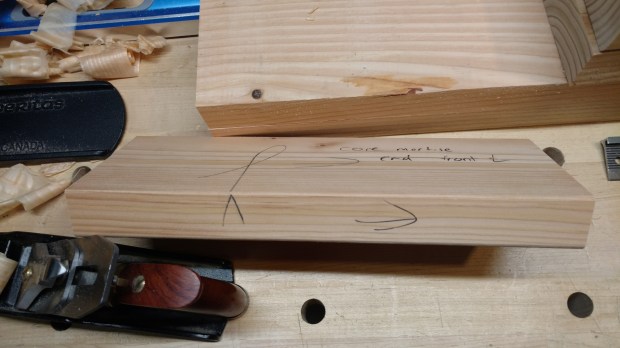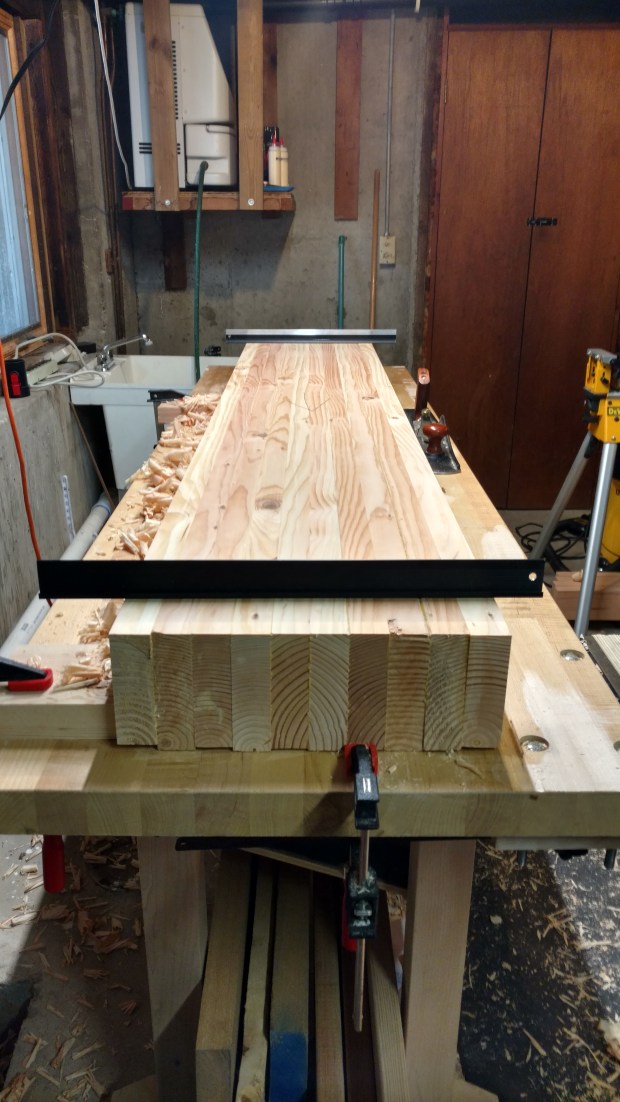The internet contains a wealth of information on how to properly laminate a workbench. Some are better than others, but something useful can be gleaned from all. Let me add to that wealth with a few reflections on a topic: grain direction in the laminated bench top. I know workbenches are supposed to be tools, not furniture, but this isn’t just about optics. Minimizing tear-out serves both structuring and aesthetic purposes.
Perhaps because I rely heavily on a thickness planer after S2S’ing boards by hand, I am conscious of grain direction at all times. I keep a charcoal pencil handy and every board, in addition to face and edge marks, gets two arrows, each indicating grain direction on the reference face and reference edge. This allows me to quickly orient the boards, flip them end-over-end, and pass them through the machine for tear-out-free thicknessing.

Every board. Every time.
Minimizing tear-out on face grain will increase the overall glue surface and, therefore, increase the overall strength of the laminated bench top. But, ultimately, those faces are hidden in the glue up and will never be dressed again. What is most critical when laminating a benchtop is aligning the edge grain direction of the entire slab.

All of this grain runs in the direction of the giant black arrow.
I have a specific reason for this assertion: the edge grain surfaces will be dressed many times through out the life of the workbench. Taking a few minutes to orient the edge grain direction during the glue up means less work both (i) when initially flattening the bench top during construction and (ii) when re-flattening the bench top from time to time. And over the life of a workbench, that will add up to quite a bit of time and energy saved. And you might possibly save yourself some awful splinters down the road.
Plus, it will look nice. After all, your workbench may one day be someone’s antique dining room table, right?
JPG
Yes, the bench IS a tool, but just like the angle on a chisel, or the set of a sawtooth, details such as grain direction are not only important aesthetically, but affect the overall structure.
I made my wife read this and she was fascinated. I think you have a new fan.
As always, superb post full of wonderful instruction and information. Keep it up.
Wiley
LikeLiked by 1 person
Great post, James. I like to try to work this was as much as possible, too. Anything that makes my job easier down the road is a good thing.
LikeLiked by 1 person